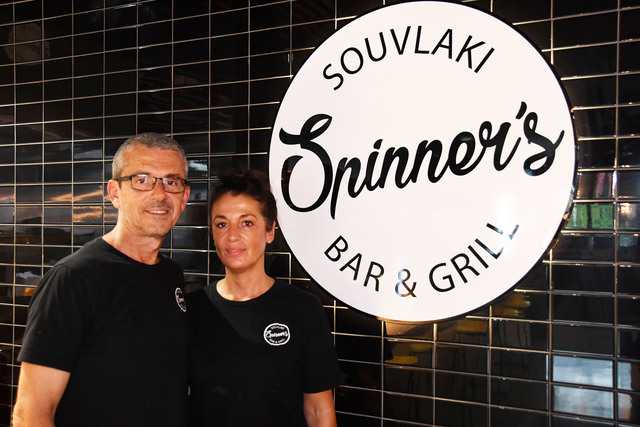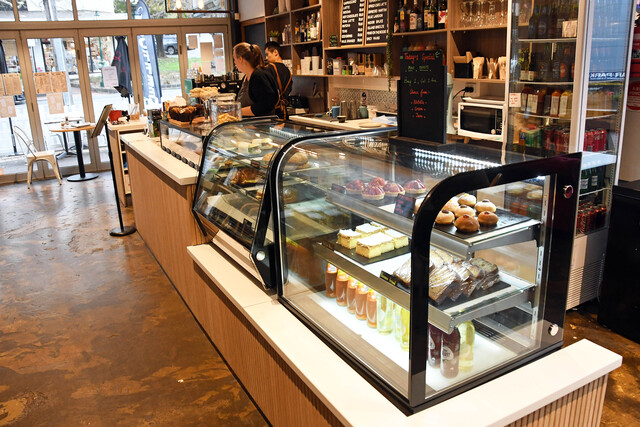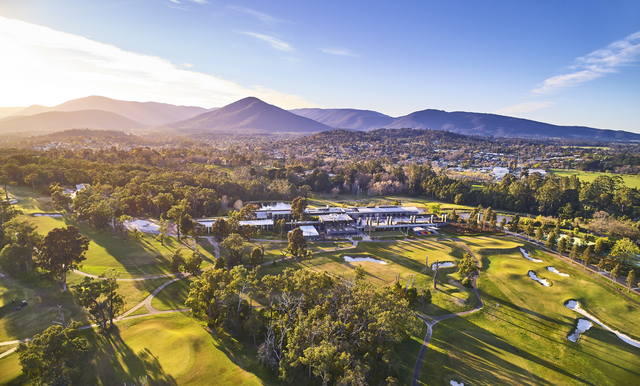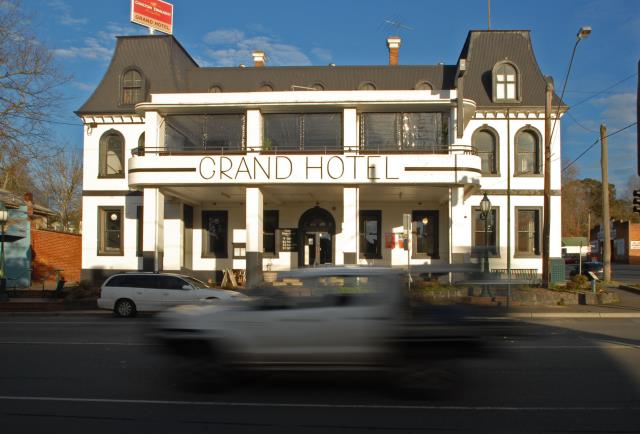 Isabella Pearce, 9, is just starting out on the courts at Healesville. She donned a 1954 premiership blazer for a 120th photo with club stalwarts (from left) Dot McMaster, Lorna Murphy, Rick Highett and president Kathy Cameron. Mrs Murphy (nee Clemann) was on the ’54 premiership team with Miss M. Ure, L. O’Neill, Miss O. Potter, R. McLaren and K. McBain.
Isabella Pearce, 9, is just starting out on the courts at Healesville. She donned a 1954 premiership blazer for a 120th photo with club stalwarts (from left) Dot McMaster, Lorna Murphy, Rick Highett and president Kathy Cameron. Mrs Murphy (nee Clemann) was on the ’54 premiership team with Miss M. Ure, L. O’Neill, Miss O. Potter, R. McLaren and K. McBain.
By Kath Gannaway
HEALESVILLE Tennis Club was in good company when it was formed in 1889.
At the club’s 120th birthday celebrations on Sunday, local historian and club member Bryn Jones said that between the late 1880s and the late 1890s a remarkable number of sporting clubs and cultural societies were established in Healesville.
It was a decade, he said, when the hamlet of Healesville, established in 1865, began to emerge from its crude backblocks image.
“As well as the tennis club, cricket, football, athletics, rifle, bowls, croquet, cycling and horse-racing clubs and a literary and debating society, a social club for dancing, singing and party games were formed during this period,’ he said.
“They, and the Amateur Minstrels, and the Healesville Brass Band constituted Healesville’s social fabric,” he added, putting the club’s beginnings into context for the group of past and present members and guests.
Among visitors welcomed by club president Kathy Cameron were Tennis Victoria representatives, vice-president Geoff Stone and treasurer John Bryan, Yarra Ranges Council representative Cr Jeanette McRae and Robert Jackson from the Eastern Region Tennis Association.
Ms Cameron who, Mr Jones noted, shared her name with the club’s first president and local MP of the time, Ewen H. Cameron, and the first secretary, Mr D. Cameron, said she believed the club, one of only a handful of Victorian clubs with such a long history, would be the envy of many clubs, having achieved such a milestone.
The first courts were on River Street, by the Watts River – where the bowling club now is.
In his report Mr Jones said three new courts were being used for practice by 30 members just six weeks after the club’s formation.
The courts were officially declared open by Mrs Joseph Shaw at 3.15pm on 11 September 1889 and, after an exhibition match and mixed sets, a social function was held at Edgecumbe’s Hotel (now The Grand) with the celebrations concluding at 3.30am – the next day.
Among several amusing anecdotes on the club’s history Mr Jones relayed the story of the “girls’ shorts” controversy of 1936.
It was reported in the Healesville Guardian, Mr Jones said, that girls displaying the new fashion – shorts – were turned off the new courts in Queens Park by order of the shire council president “in the interests of preserving decency and the good name of Healesville”.
“But the ladies did not respond meekly: one stormed into the newspaper office – ‘What’s all this fuss about shorts? We feel much freer in them, healthier and cooler – commonsense before prudery. Because I am not afraid to show my legs is no reason for people to go flying into hysterics, and imagining that the days of Sodom and Gomorrah are overtaking Healesville. Remember this is 1936 – a wave of youthful emancipation is sweeping the world’.”
Mr Jones said the name of the feisty member of the Healesville Tennis Club was not recorded.
Mr Stone and Mr Bryan both commented on the “high tone” set by the club with the clubrooms adorned with premiership flags, honour boards recognising the club’s 12 life members and club champions and many historic photos and documents recording the club’s history.
“It is daunting when I think back to 1889 what it might have been like here in Healesville,” Mr Bryan said.
“Clubs like Healesville are truly the grass roots of tennis and the success or failure of tennis comes right back to clubs such as yours,” he said.
Life member Rick Highett also spoke and, having been an active member since 1958, was able to provide an insight into the club’s achievements and place in the community over the past half century.
He said the club was in the Lilydale and Wandin District Association when he started. “There were no junior games and almost no school-aged boys and girls playing,” he said.
By the late 1970s the club was playing in the Yarra Valley District Tennis Association.
“Healesville didn’t have enough courts and played at the high school, at two local guest houses and at Steels Creek,” he said. “Healesville was the dominant club.”
The club was strong in the ’80s. The new clubrooms were built at Queens Park and there were more than 30 teams in the junior and senior competitions.
Four new courts were built at the Don Road Sporting Complex in the ’80s to meet the demand of the flourishing club.
The club has 10 courts and 180 members and competes in several regional competitions as well as in-house veterans, social and night tennis. New members are always welcome.






